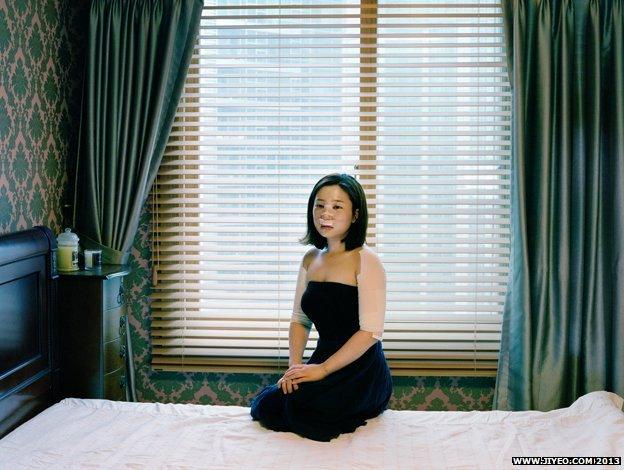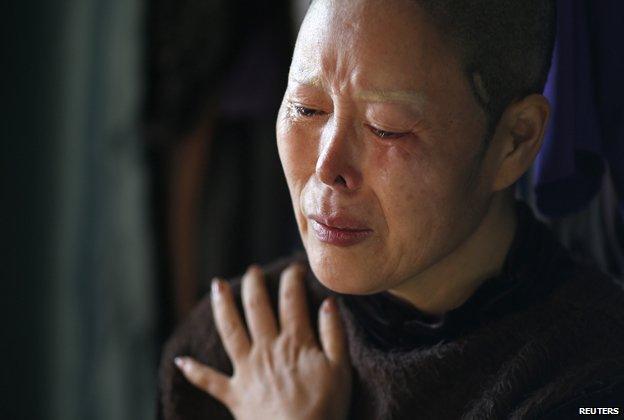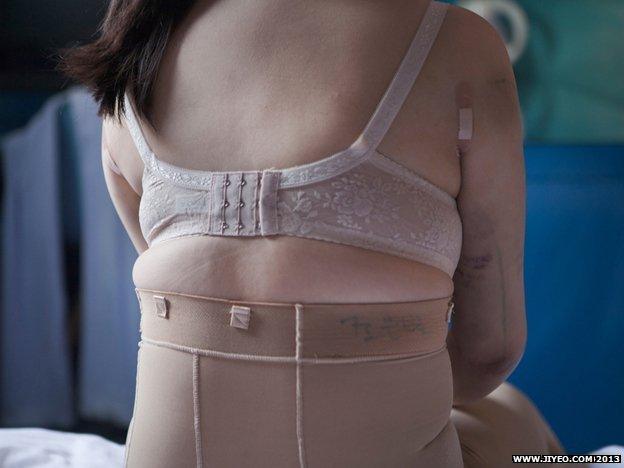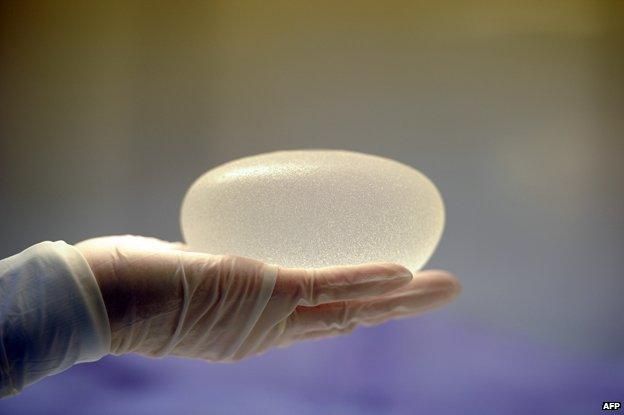Victims of a craze for cosmetic surgery
- Published

You can't avoid the adverts. Everywhere you go in Seoul, you are urged to change your shape through plastic surgery. In affluent Gangnam, every wall seems to have a sign pointing to a surgery.
On the train and in the street, you're told you can "bring your face to life". "Facial contouring" is on offer - "breast surgery", "anti-ageing", "eyeplasty", "body contouring". There is "square jaw reduction" (mainly, the adverts imply, for men). Or transforming your face "from saggy and loose to elastic and dimensional", targeted mostly at women.
One acquaintance of mine complains that her chin becomes painful when it rains. And then it emerges that she went into the surgery for a nose job but got persuaded - or persuaded herself - that it was her chin that really needed its contours changing. The result: a more shapely chin that is also a more painful chin. Despite that, she is now intent on breast enlargement.
In this country, parents tell me that they give their teenage daughters a present of what's called "double eyelid surgery" which makes eyes more pronounced - "less Asian" is the truth of it. Why, I wonder, when Korean eyes seem so beautiful the way they are?
The retort that blares from the adverts on the train is that "confidence in appearance brings positive energy which can be the foundation of happiness". Happiness - so easily found at the cut of a knife!
Except that, of course, it's not. There is now a backlash, a slew of court cases where patients - or victims as they might be known - are suing doctors who re-arranged their faces, but not in a good way. One victim said when the bandages came off: "This is not a human face. It is more revolting than monsters or aliens."

Kim Bok-Soon was persuaded to spend 30m Won (£17,320) for 15 surgeries on her face
Part of the problem is that plastic surgery is so lucrative that unqualified doctors have been drawn in - or rather doctors qualified in other areas of quite different medicine. It's alleged that procedures have been done by what are called "ghost doctors". In one court case, it's claimed that the advertised doctor slipped out of the operating room once the patient was under the anaesthetic and the job was then botched by the replacement surgeon.
On top of that, it's emerged that some before-and-after photos have had a bit of surgery themselves - surgery of the Photoshop variety.
The upshot is that the Korean Association of Plastic Surgeons has called for tighter rules for doctors and for advertisers. They fear that the bad publicity is damaging the reputation of an industry which is largely well-run.
But they're fighting against the tide. Plastic surgery is very profitable, even with prices that undercut the US and Europe. One of the big businesses in Gangnam, here in Seoul, prices "eye-shape correction" at 1.7m Korean Won. That's about £1,000 ($1,500) for a 30-minute, simple procedure. It rises to 12m Won for a "full-incision face lift" - that's about £7,000 ($11,000).

South Korea plastic surgery

In response to a survey of 1,000 patients, run by the Korea Consumer Agency (KCA):
70% of those questioned said they had a surgical procedure to improve their looks, and 14.5% said they believed it boosted their prospects for employment or promotion
The most popular procedure was the "double-eyelid surgery" - 67.8% of respondents said they undergone the procedure
32.3% of those asked responded that the results of their procedures were "unsatisfactory"

Translation is increasingly needed. There's a big market with a similar sense of vanity right on Korea's doorstep: China. According to the reputable Joongang Daily here, two-thirds of the foreigners who came for plastic surgery to South Korea last year were from China, more than 16,000 customers. The press here says that some of the procedures have been so radical - so successful - that passport officials have not believed it's the same person holding the passport.
But maybe Chinese people who aspire to film-star beauty or, for that matter, South Korean parents who think they can improve their daughters through the surgeon's knife should reflect on one horror story going through the courts.
A former beauty queen here had breast enhancement which went horribly wrong. After a series of infections, she ended up with one breast much bigger than the other.
She blames doctors for the medical failure but also for never saying to her: "Look, you don't need this." "Plastic surgery is like an addiction," she said. "If you do the eyes, you want the nose.
"And doctors don't say, 'You're beautiful enough as you are.'"
Ji Yeo's photographs, external were first published as part of a series called Beauty Recovery Room

More from the Magazine

In 1962, Timmie Jean Lindsey became the first woman to receive silicone breast implants in a groundbreaking operation in Houston, Texas. Today, breast augmentation is one of the most popular procedures worldwide, write Claire Bowes and Cordelia Hebblethwaite.

Subscribe to the BBC News Magazine's email newsletter to get articles sent to your inbox